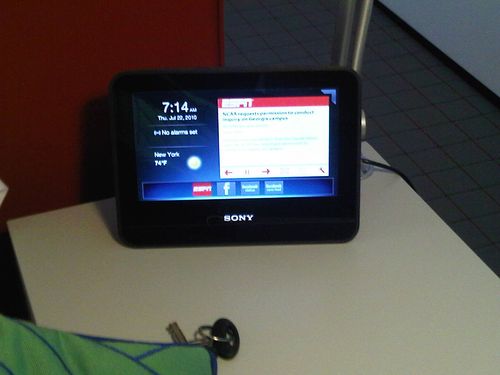Fast, Fair, and Frictionless Content Licensing On The Internet (continued)
Last month I posted two back to back suggestions for industry self regulation on the issue of copyrights and the Internet. The first was a competitive market for third party whitelist and blacklists. The second was "fast, fair, and frictionless content licensing on the Internet."
I am seeing signs that both models are emerging, slowly, but surely.
In the case of frictionless content licensing, I wrote:
I think it will be even harder to get the content industry to build instantaneous real-time self service licensing systems for their content.
But happily, the photography industry is proving me wrong. Yesterday, Getty Images announced something they call PicScout Image IRC. Not the most memorable name. But it is "instantaneous real-time self service licensing on the Internet."
Here's how it works. When an image is posted to your service, you send the image to them via their API, they fingerprint it in real time, check the fingerprint against their database of rights managed photographs that are out there, and then tell you if the image is licensable, must be taken down because its not licensable for the Internet, or if they don't have it in their database, then you keep it up under DMCA. And they handle all the billing for the licensable content. If you don't want to pay licenses for images posted to your service, you can use their service just to take down all images that are under license.
It is a lot like what Audible Magic does for the music industry or what Content ID does for YouTube, in terms of rapidly identifying the content and determining if it is infringing on a license or not. But PicScout goes one step further and provides an instant license to the content if the application wants one. That's a big deal and is the very step I think the content industry needs to take to tackle copyright infringement on the Internet. It is not enough to say something is infringing. The right thing is to say, "that is infringing, but here is a license" and to do that in real-time.
Any developer can use this PicScout Image IRC API. No meetings required. No lawyers required. Fast frictionless licensing on the Internet. I really like it.









![Reblog this post [with Zemanta]](http://img.zemanta.com/reblog_b.png?x-id=68d354d0-85b3-4019-a281-e39697b4caa7)
![Reblog this post [with Zemanta]](http://img.zemanta.com/reblog_b.png?x-id=e72eb0f8-18c4-497f-9d0b-bf4fd0f4f476)